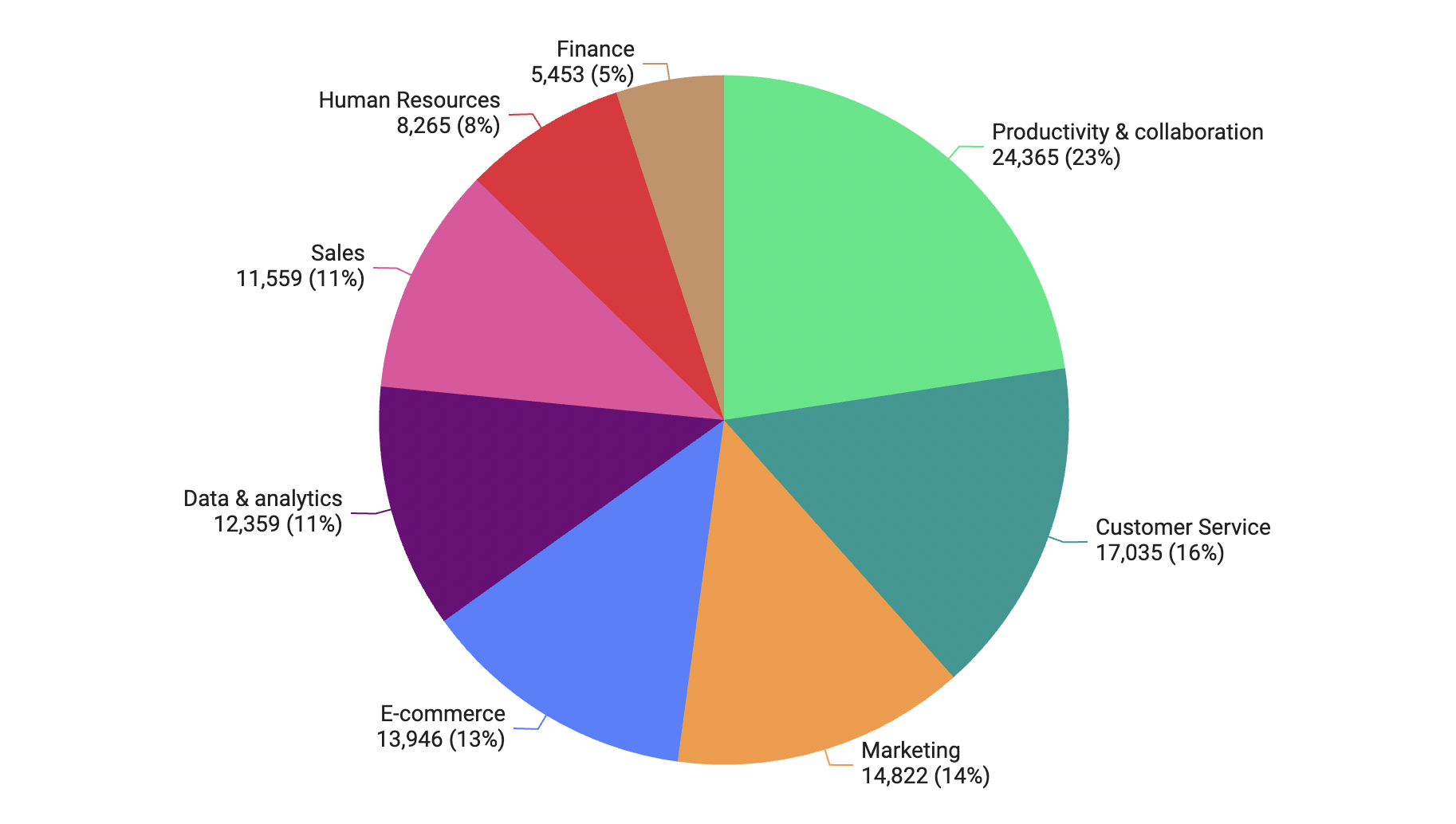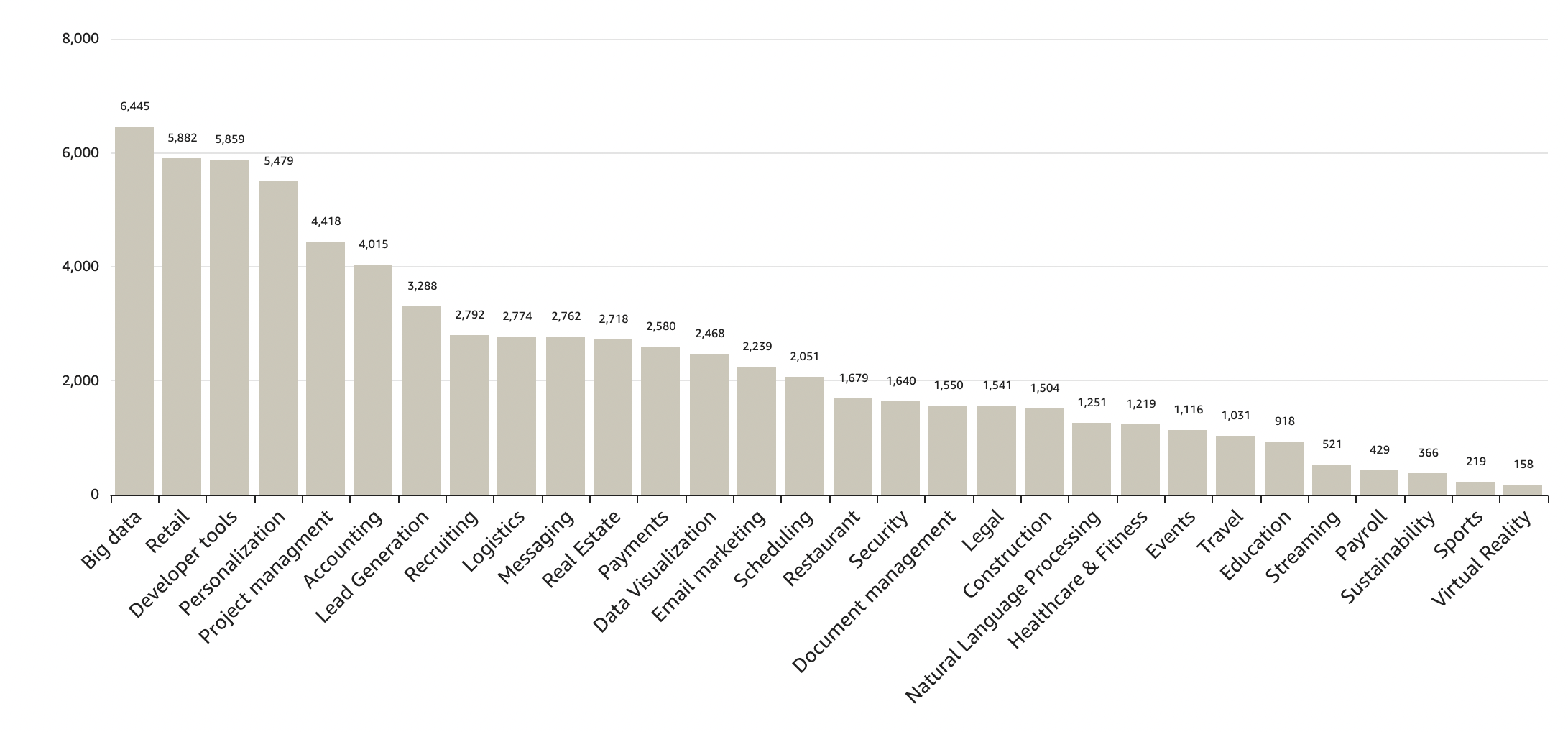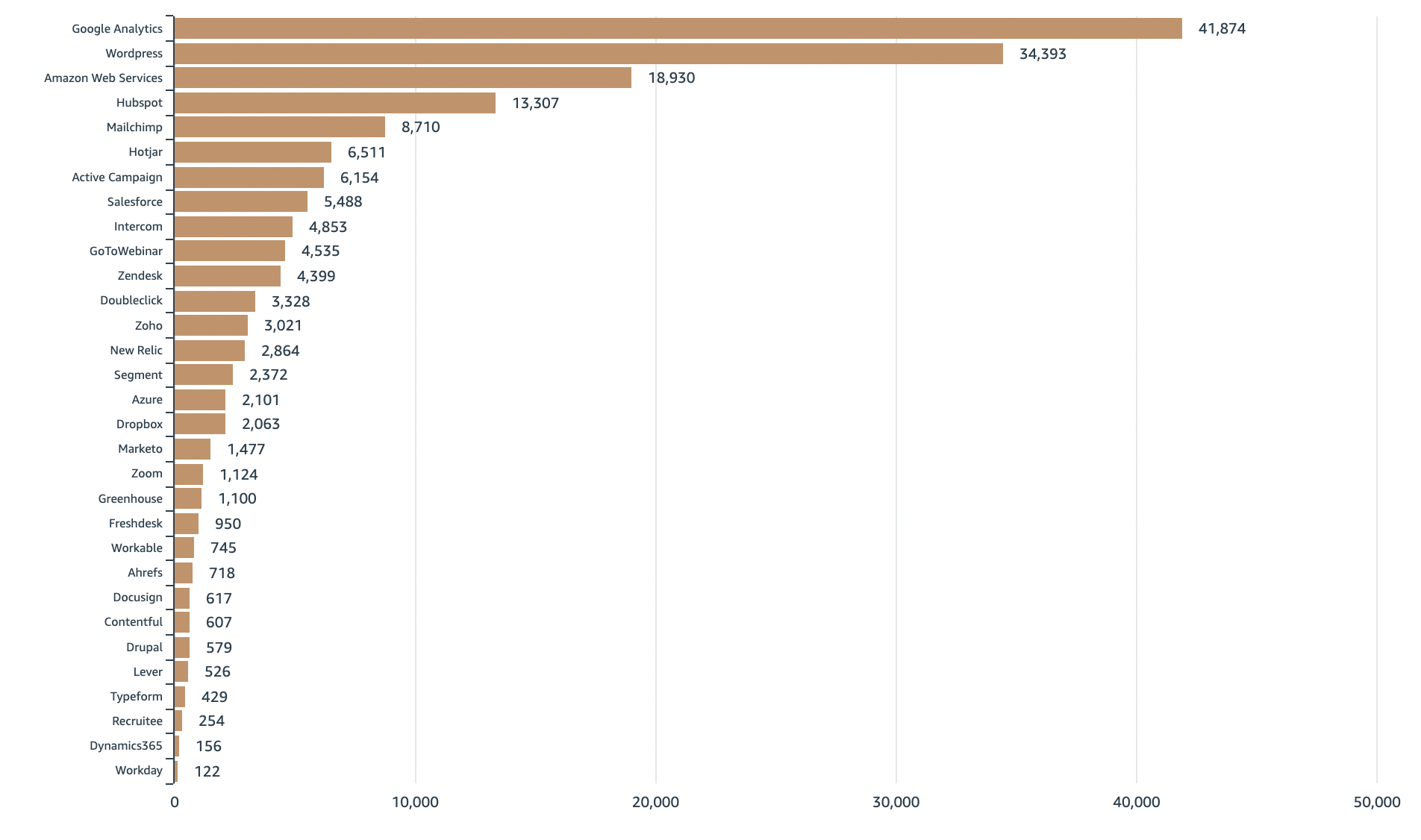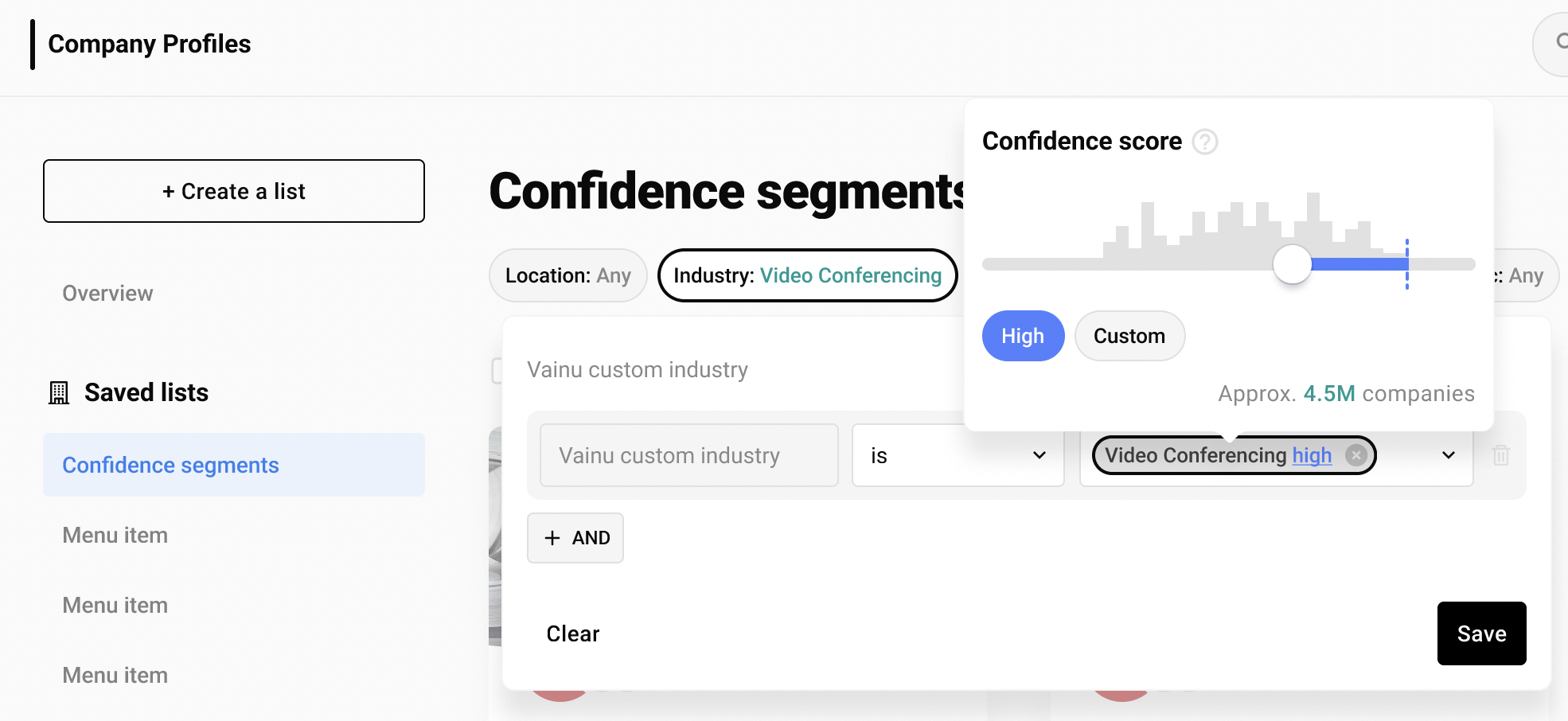A global study of 70,000 SaaS companies
If you ask Google, how many SaaS companies are there in the world? The answer that pops up most frequently is around 25,000. This is by no means a small number, but if you were to search for SaaS companies in our global company database, you’d find approximately 175,000 companies associated with that industry label. This means that our database returns nearly 7 times more SaaS companies than the number of SaaS companies Google suggests there even is in the world. Why the difference?

Of course, we’d like to be able to say that we’re right and Google is wrong, but the truth is that there is no real right answer to the question. The ~175,000 SaaS companies our database contains are based on the predictions of our AI-based algorithm, which analyzes companies’ website content and assigns industry labels. Each of the model’s predictions comes with a confidence score, which, as the name suggests, communicates the model’s confidence in its prediction being correct.
So, our search originally returned ~175,000 SaaS companies, but when we increase the confidence score threshold, which means our search will only return the companies that the model is highly confident are actually SaaS companies, we are left with around 72,000 companies.
Note: These ~72,000 companies can include companies that have been acquired but are still operating under their unique brand name. Slack and GitHub are good examples. They both have their own separate websites even though they were recently acquired by Salesforce and Microsoft, respectively.
Interestingly, roughly 50% of these ~72,000 SaaS companies belong to the TOP 10 million websites globally when measured by website traffic. This is an especially impressive number when you take into account that there are over 1 billion websites in the world, which translates to 50% of SaaS companies worldwide belonging to the top 1% of most visited websites in the world. SaaS companies are clearly quite popular today.
SaaS segments
As you may well know, SaaS companies are not all the same, and there’s a huge number of different SaaS segments today. Unfortunately, there isn’t a universally agreed-upon taxonomy for SaaS segments, but in our taxonomy, we have more than 900 other industry labels that can be combined with the SaaS industry label.
So, in order to get a high-level overview of what type of SaaS companies there are in the world, we decided to look at the industry labels most frequently assigned to SaaS companies by our AI-based industry profiler.
As you can see from the chart below, there are over 24,000 companies that provide productivity tools and collaboration apps. ~17,000 companies get labeled as customer service solutions and close to 15,000 as marketing software. E-commerce, Data & Analytics, and Sales are also segments that contain more than 10,000 companies. It’s worth noting that one company can be present in several of these segments. Take HubSpot, for example. They provide CRM for sales teams, marketing automation for marketing teams, customer hub for customer service teams, and operations hub for SalesOps and RevenueOps people.

SaaS companies and industry verticals
As previously stated, in our industry taxonomy, we have over 900 segments. We decided to pick 30 of them and look at the number of SaaS companies in each. Here was where we started seeing some interesting differences.
The Retail segment is more than 5,000 companies strong, while the Events, Travel, and Education SaaS segments include roughly 1,000 companies each. Our data would suggest that there are many SaaS sectors that are already quite crowded. For example, there are almost 3,000 SaaS vendors for recruiting, many of them providing ATS (application tracking system) platforms. Also, if you’re looking for an accounting SaaS vendor, you have more than 4,000 options to choose from. You can see all 30 segments and the number of companies in each of them below.

SaaS companies and website technologies
SaaS companies are often early adopters. At Vainu, we track tens of thousands of website-based technologies, so we picked some of the more popular ones and looked at how many of the SaaS companies are using them. It’s worth noting that some technologies are easier to detect than others. There are several detection patterns and methodologies for most of them, so the below numbers are just indicative.

Unsurprisingly, Google Analytics and WordPress are the two most used technologies by SaaS companies. To potentially garner some more interesting findings, we decided to pick six technologies—HubSpot, Salesforce, Mailchimp, Intercom, Hotjar, and Active Campaign—and analyze whether the popularity of those platforms is dependent on SaaS industry verticals.
HubSpot has 5 SaaS verticals with over 30% market share. Those are Sustainability (33.9%), Virtual Reality (32.9%), Security (32.2%), Streaming (30.7%) and Natural Language Processing (30.5%). Those are really high numbers, especially compared to verticals such as Project management, where only 11.9 % of the companies are using HubSpot.
Salesforce’s best segments are Security (20%) and Big data (13.3%), Mailchimp’s are Sports (18.3 %) and Travel (18.2%), and Intercom’s are Streaming (10.6%) and Education (10.3%). Active Campaign is popular among other Lead generation and Email marketing companies.
If you want to do a deep dive into these results, you can find a slide deck that includes all results by all 30 industry verticals here.
SaaS companies and founding year
Unsurprisingly, SaaS companies are quite young. In fact, according to our data, ~73% of all SaaS companies have been founded after 2010. As you can see in the graph, there are a few really old companies, but those weren’t necessarily SaaS companies when they were founded; instead, they have introduced a SaaS offering recently and are therefore considered SaaS vendors today. But the vast majority of companies are young, with 93% of the SaaS companies not existing in the year 2000.
.png?width=760&name=chart%20(5).png)
SaaS companies and employee count
According to our data, more than half of the SaaS companies employ less than 11 people, which means they are micro companies (1–10 employees). While media attention often goes to large unicorn companies, it’s good to keep in mind that ~90% of all SaaS vendors are micro or small businesses (< 50 employees).
.png?width=1066&name=chart%20(2).png)
As in our previous analysis of this sort, there are some interesting differences in the number of employees across different industry verticals. For example, two-thirds of the Lead generation (67.7 %), Email marketing (65 %), and Project Management (64.8 %) are “micro” companies, while only one-third of Security (28.4 %), Virtual Reality (31%) and Payroll (32.2%) companies employ 1–10 employees.
You can take a closer look at all 30 industry verticals and the percentage of “micro” businesses in each of them in the slide deck that was mentioned earlier (here’s the link again so you don’t have to scroll up). The slick deck also includes the percentage of companies that rank in the global TOP 1 million sites by traffic in each vertical. Currently, Streaming (29.4% of all companies in that vertical are among the TOP 1M), Personalization (26.6%), and Security (25.9%) are the top 3.
Interested in trying this yourself?
If this our SaaS study has sparked an interest and you want to analyze additional SaaS verticals or investigate the number of SaaS companies that provide free trials, have a pricing page, or provide API docs on their website, sign up for a free trial. The free trial gives you access to our entire global company database and the 900+ industry verticals that are available there as search filters. You can even decide the confidence threshold for your search yourself by using the slider in the platform.

And we’re, of course, always happy to discuss our data and its applications in more detail, whether you would want to access this sort of data through an API (here’s a link to our developer portal) or through our plug-and-play CRM connector, so feel free to drop us a line in our chat.